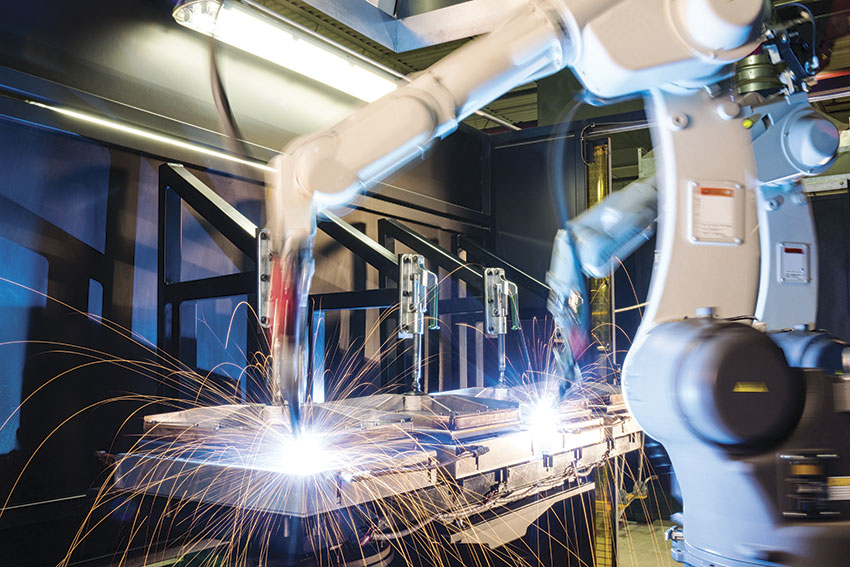Prime Minister Shinzo Abe hopes that a new technology-driven industrial revolution will underpin a massive expansion of his country’s economy

While some Japanese companies are thriving and managing to compete with low-cost competitors from China and elsewhere through innovation and advances in technology, the government has set ambitious industrial and economic growth targets.
Premier Shinzo Abe wants Japan’s gross domestic product to grow to 600 trillion yen ($6 trillion) by 2020, which in turn would require an annual GDP growth of around 3%. This seems like a big ask given growth was just 0.5% last year.
Mr. Abe however remains confident that a wave of economic reforms, and repeated fiscal and monetary stimulus injections will result in greater private and state sector cooperation in the development and use of new technologies, in turn reviving and upscaling Japan’s manufacturing base.
One company building on Japan’s expertise in advanced environmental technology is Kanken Techno, a pioneer in supplying equipment that cleans and reduces emissions of greenhouse and other hazardous gases.
Established in Osaka’s heavy industry belt in 1978 and now specializing in making plasma-type gas abatement systems using high-efficiency electrical heat exchangers, Kanken Techno’s first major client was no less than industrial giant Panasonic.
“Panasonic’s CEO at the time was very committed to ensure that all products made by Panasonic were environmentally friendly, and knew that sooner or later customers will not want to buy non-environmental friendly products,” says Hiroshi Imamura, the company’s President.
Kanken Techno’s recent successes have been helped by a weaker yen over the past year, which boosted the exports of major domestic clients and increased demand for its products overseas.
“Our equipment manufacturing costs are quite high, so at the end of the day, the most important thing for us is to innovate and make the technology we have cheaper, and use a lower amount of energy, so that it can be sold in foreign markets,” comments Mr. Imamura.
Around half of Kanken Techno’s 800 staff are based in key markets Taiwan and mainland China, and the company’s sales peaked at 5.4 billion yen ($53 million) last year. With the U.S. and China now having signed the emissions-reduction COP21 agreement after previously spurning the Kyoto Protocol, Kanken Techno is looking for big sales growth in these regions.
Mr. Imamura sees the U.S. as a major opportunity given expansion of its high-technology manufacturing, and says the company is in talks with Idaho-based semi-conductor manufacturer Micron Technology, and California-based Intel and GlobalFoundries.
The influence of California’s Silicon Valley is huge. Last year Mr. Abe spoke about how Japan is learning the lessons of Silicon Valley, and trying to build networks into the region.
A cheap yen could be a factor in the sales success, or failure, of Japan’s first commercial airliner in 50 years, the Mitsubishi Regional Jet, which took to the air in late 2015.
Seen as a symbol of Japan’s industrial revival, the high-tech, twin-engine 92-seat regional jet made by Mitsubishi Heavy Industry and Toyota, was flown to the U.S. in August for sales certification trials.
First deliveries of the plane, whose initial development was one-third funded by the Japanese taxpayer, are expected in two years’ time, but it remains to be seen if it can compete on price and technology with sector market leaders Embraer of Brazil and Canada’s Bombardier.
Another transport-focused company hoping to profit from next-generation technologies is Denso, a major supplier to the world’s big automakers of auto parts and advanced automotive technology.
It plans to use Internet of Things technology, sometimes known as the Industrial Internet, and invest 10 billion yen ($99 million) to connect 130 of its factories in Japan and overseas between 2018 and 2020.
Using internet-linked sensors and embedded software to record and analyze machinery, buildings, vehicles, production facilities and staff activity in real time, the company will use the data to streamline output, avoid breakdowns and cut maintenance costs.
In an effort to deepen its knowledge in artificial intelligence and further widen its engineering expertise in advanced driver-assistance systems, Denso in late August signed a technical advisory contract with one of the world’s foremost researchers in computer vision, Carnegie Mellon University Professor Dr. Takeo Kanade.
Also active in using Internet of Things is printer and telecoms products maker Oki Electric, a company which already has experience in integrated transport management systems for road, maritime and air transport using advanced data technology.
Oki has already introduced Internet of Things technology at four of its factories and is rolling it out across the company, helped by the falling costs of various sensors used and technical advances in data transmission.
Japan’s innovative efforts can be seen as well in Honda’s new hybrid electric-gasoline auto that does not use environmentally sensitive and expensive heavy metals in its motors, something it says “will lower our costs and reduce our exposure to price fluctuation.”
Not to be outdone, rival Toyota is rolling out a new version of its popular Prius saloon hybrid with a rooftop solar panel to help recharge its batteries even when it is parked, boosting fuel efficiency by up to 10%.
The human touch
While new technologies are driving efficiency in factories across Japan, Toyota has taken an interesting step by replacing some of its industrial robots with humans. The company hopes that increasing human input in the production process will increase the skillsets of its workers, and will lead to improvements in efficiency and quality.
So far, workers performing tasks previously managed by robots have reduced waste in crankshaft production by 10%, and helped shorten the production line. Others improved axel production and cut costs for chassis parts.
“We cannot simply depend on the machines that only repeat the same task over and over again,” project lead Mitsuru Kawai told Bloomberg. “To be the master of the machine, you have to have the knowledge and the skills to teach the machine.”
0 COMMENTS